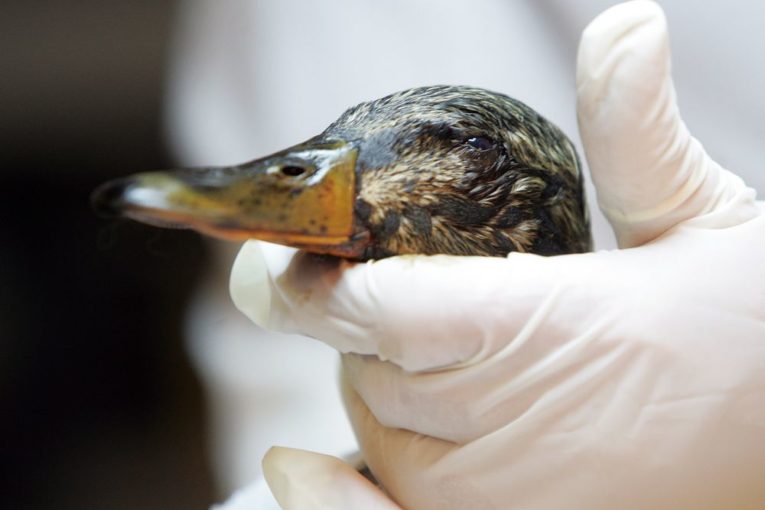
Some organizations never miss an opportunity — to miss an opportunity.
The latest example involves a Pembina Institute news release alerting the public to the upcoming 10th anniversary of the 1,600 ducks that died on a Syncrude tailings pond.
The good folks at Pembina must be hurting for attention.
Predictably, they chastise government and regulators for not doing enough to decrease tailings waste while highlighting the number of birds that have died since 2008 – just over 700.
An estimated 162,169 ducks were ‘harvested’ for sport in Alberta alone during 2016. In 2008, more than 173,400 ducks were killed, meaning the unfortunate Syncrude event accounted for 0.92 per cent of that year’s tally.
The Pembina Institute fails to acknowledge the advancements made in tailings management during the past 10 years.
The Canadian Oil Sands Innovation Alliance was formed in 2012 with the intent of addressing a number of environmentally related challenges in the oilsands, including tailings management.
At last count, 78 projects valued at $280 million were under the COSIA umbrella.
“The total amount of capital invested directly by the industry to manage tailings ponds today is $10 billion,” said Terry Abel, executive vice-president with the Canadian Association of Petroleum Producers.
That, and the $50 million spent annually on continued investigation regarding tailings management and the piloting of related processes and projects, is not pocket change.
The COSIA model collaboration, which includes the sharing of intellectual property, has been held up as an example to industries beyond the energy sector on how companies can work together to solve specific challenges in an efficient and cost effective manner.
Then there are the regulatory changes that have taken place over the last decade.
Abel cites Directive 85, issued by the Alberta Energy Regulator and updated last October. It replaced Directive 79, which was viewed as too prescriptive because it only recognized one type of technology and management process.
The new directive, known as the Fluid Tailings Management for Oil Sands Mining Projects, solicited input from all stakeholders, regulators, industry, the associated technical working groups, non-governmental environmental organizations and First Nations.
In other words, it was meant to be as comprehensive as possible. And yes, Pembina was at the table.
The organization credibly contributed to the establishment of the province’s Climate Change Leadership Plan through then executive director Ed Whittingham, who was on stage with government, industry and First Nations representatives when the plan was unveiled in November 2015.
By failing to acknowledge any sort of progress, the Pembina Institute is being abundantly clear its agenda remains focused on the oilsands – and opposing its continued development.
Its release also takes square aim at the Alberta Energy Regulator, the length of time it takes to reclaim land and raises the spectre that Albertans will bear the costs, not the companies.
For now, tailings ponds are part of the oilsands mining extraction process. The water in those ponds is recycled and reused.
“There is a functional purpose to the process – the water is needed and used by the industry,” explained Abel.
What has changed is that under Directive 85, which clarifies expectations regarding how tailings must be managed and the reclamation process itself.
“By the end of the mine life, all tailings ponds must be in reclaimable form within 10 years,” said Abel.
The expectation is that companies will reclaim sites as projects go forward – instead of waiting until the mines have run through their useful lives and only then start the reclamation process.
And the reason it takes a long time is simply that the life of a mine – oilsands or otherwise – runs several decades. The timeframe would be shorter if the reserve life of the oilsands assets could be counted in years rather than decades.
It’s worth noting the era of big mining projects is likely at an end. What will be seen in the years to come – other than the shift to in-situ extraction – are incremental expansions at existing sites.
The April 28, 2008 duck incident was unfortunate. No question.
But to raise it as a way to vilify the industry, which has broken new ground since 2008 — including the creation of COSIA to tackle the challenges highlighted by Pembina – is the wrong approach.
Pembina should think of itself as part of the solution, and to transparently work with industry to solve the challenges it faces rather than to criticize and highlight the shortcomings, even as advances have been made.
Failing to take this approach smacks of an organization looking to make an old issue hot again with the sole intent to serve its fundraising goals rather than making a difference.
Deborah Yedlin is a Calgary Herald columnist
You can read more of the news on source
